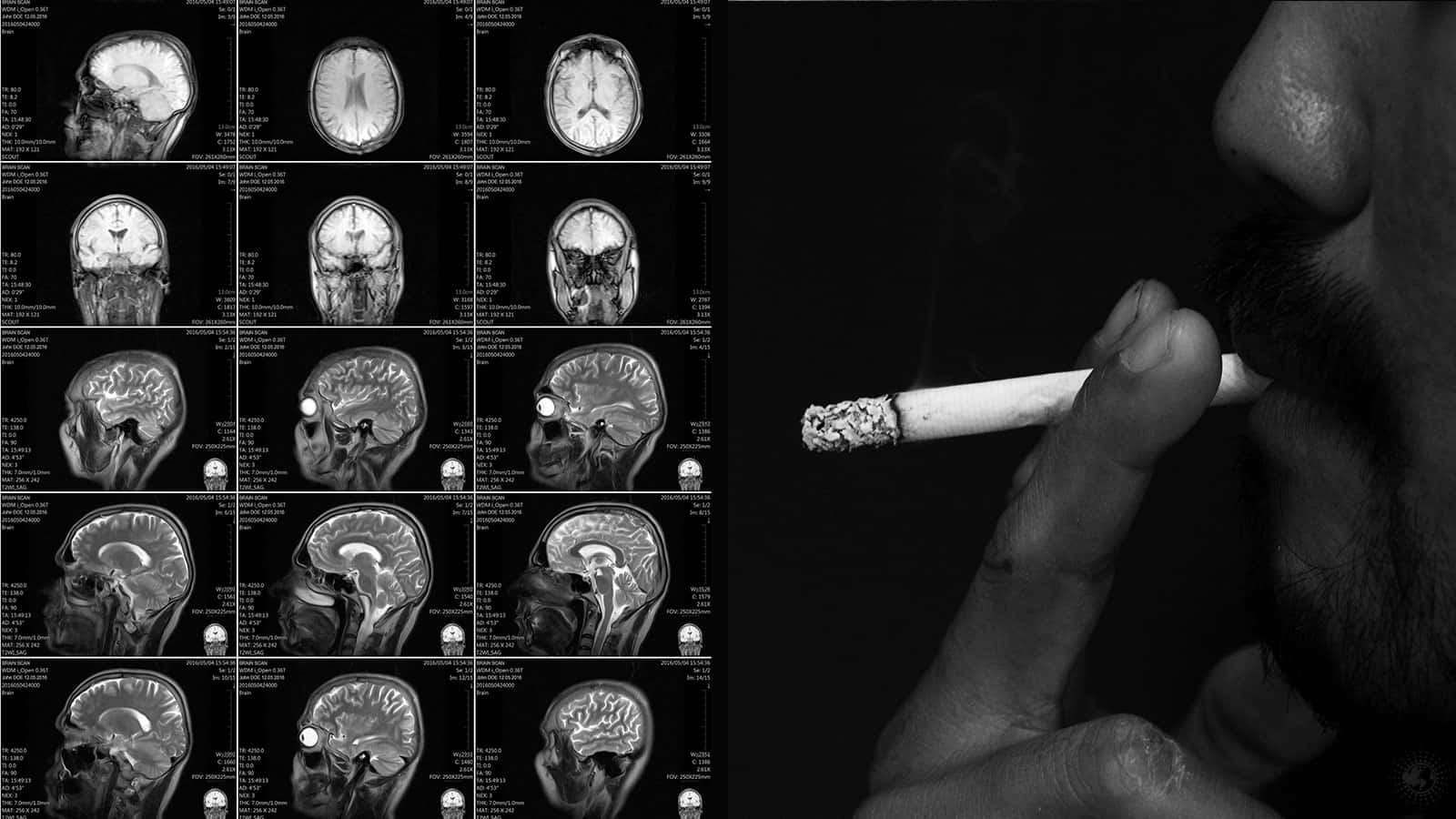Nicotine is one of the single most addictive substances in the world. It is also the most commonly-abused drug in the world.
Most of us are at least relatively aware of how nicotine affects the body. Unfortunately, we cannot say the same about its impact on the brain. In this article, we’ll discuss how nicotine interacts with this vital organ.
Among other topics of discussion:
– What nicotine is and what it does
– Why nicotine is in tobacco products
– Tobacco use statistics and trends
– How nicotine impacts the brain
– How to kick the tobacco habit for good
If nothing else, please read this last section!
Let’s do this!
What is nicotine?
First and foremost, the most vital thing to understand about nicotine is that it is a critical ingredient in tobacco; in cigarettes, cigars, pipe tobacco, chewing tobacco, and in both wet and dry snuff.
Nicotine is a nitrogen-producing compound that is synthetically extracted from the Nicotiana tabacum plant. Although this plant is part of the nightshade family (e.g., eggplant, red peppers, tomatoes), it hasn’t much in common with its kin. That is, it offers no real health benefits to speak of.
Why do cigarettes include nicotine? Because nicotine is highly addictive. According to the U.S. surgeon general’s office, nicotine is as addictive as both cocaine and heroin. In other words, it is the nicotine that causes tobacco dependence. Tobacco, as we very well know, can cause deadly cancers and other severe medical complications.
Nicotine also stimulates the bodily processes that create the ‘high’ that users experience. Relatedly, the progressive effects of nicotine use on the body put it on par with alcohol and cocaine. As is the case with these drugs, nicotine produces a tolerance effect on the body, requiring the user to consume more of the chemical to experience the same “high.”
Tobacco User Statistics and Trends
Per a study published in the journal Addict Health, nicotine constitutes approximately:
– 3.8 percent of tobacco weight in pipe tobacco
– 1.8 percent of tobacco weight in domestic cigarettes
– 1.2 percent of tobacco weight in imported cigarettes
Scientists estimate that the nicotine content in one can of snuff or dip is the equivalent of about 80 cigarettes or four packs.
Additionally, the researchers found “no significant difference” in nicotine-to-tobacco weight between regular and light cigarettes (e.g., Marlboros vs. Marlboro Lights.)
Tobacco use statistics
Due to the highly addictive nature of nicotine, quitting tobacco in any form is very difficult. Per the World Health Organization (WHO):
– Around 1 billion people worldwide smoke cigarettes
– Tobacco use is responsible for about 8 million deaths per year. 1.2 million were non-smokers who succumbed to the effects of secondhand smoke.
– Eighty percent of the world’s smokers, or 1.1 billion people, live in low- or middle-income countries.
– Tobacco use results in the death of about half of its users.
– Tobacco smoke consists of more than 7,000 chemicals.
According to an article published by LiveScience, males dominate the smoking ranks. Here are a couple of statistics:
– More than 8 out of every ten smokers are men.
– Research shows a decrease in the percentage of smokers worldwide (35 to 25 percent for men and 8 to 5 percent for women). But population growth (5.3 billion in 1990 to 7.2 billion in 2015) negates this proportional decrease, meaning that more people are smoking than before.
Nicotine is primarily a psychoactive substance, meaning that it affects the mind and mental processes. In the next section, we’ll discuss the effects of this chemical on the brain.
The Effects of Nicotine on the Brain
“Every drug of abuse, including nicotine, releases dopamine, which makes it pleasurable to use. And when you stop smoking, you have a deficiency of dopamine release, which causes a state of dysphoria: you feel anxious or depressed.” ~ Dr. Neil Benowitz (Source)
After a user inhales tobacco, it takes just eight seconds to reach the human brain. The immediate results are an increase in blood pressure and heart rate and enhanced alertness.
Long-term, nicotine causes several biological changes in the brain, particularly to the neurotransmitters (brain chemical) acetylcholine and dopamine.
However, as we will see, usage of this substance also links to improved performance in many areas.
Nicotine and acetylcholine
Nicotine causes disruption to the normal functioning of the neurotransmitter acetylcholine. Acetylcholine plays a role in numerous cognitive functions, including alertness, learning, and memory. Physiological roles of acetylcholine include blood vessel dilation, heart rate regulation, muscle contraction, muscle movement, and respiration.
Because of the structural similarities between nicotine and acetylcholine, the brain detects the presence of the former for that of the latter. As a result, the body signals for a decrease in the production of acetylcholine and requires nicotine to resume proper functioning.
In essence, this product “takes over” for acetylcholine – despite lacking the capability to promote the latter’s role in the brain. Simply put, the brain requires (read: is addicted to) nicotine to properly function.
One reason that it is difficult to quit tobacco use is that nicotine alters the acetylcholine receptors. If we could somehow zoom in on the minuscule gap between neurons in smokers, we’d see something striking. Where neurotransmitters pass from one brain cell to another, acetylcholine receptors are absent.
The aspiring tobacco quitter has two options to “feel normal”: (1) resume smoking or (2) wait it out and deal with the withdrawal symptoms.
Nicotine and dopamine
Another reason that quitting smoking is so hard is that nicotine rewards the brain – literally. The chemical actively produces feelings of pleasure by creating a surge in the neurotransmitter dopamine. Moreover, nicotine stunts an enzymatic reaction in the brain that metabolizes dopamine.
The result is a dopaminergic system (the apparatus that produces dopamine) indirectly and artificially boosts the levels of dopamine. The smoker subconsciously associates the act of smoking with spikes in pleasurable feelings.
When smokers don’t get that nicotine hit regularly, the limbic system is thrown through a loop. An erratic limbic system manifests as disturbances in mood, including anxiety, depression, and irritability.
 Nicotine as a nootropic
Nicotine as a nootropic
A nootropic is a drug that one uses to enhance cognitive performance. Caffeine is a nootropic, as is nicotine.
In a 41-study meta-analysis published in the journal Psychopharmacology, researchers confirmed what many people already knew: that nicotine enhances brain performance. Analysis linked tobacco use and “significant positive effects” in six cognitive performance areas:
– Alerting attention: Becoming and staying aware of one’s surrounding environment.
– Directed attention: The voluntary movement of attention to a specific stimulus
– Fine motor skills: Performing intricate movements with the hands, fingers, feet, toes, and wrist.
– Response time: The amount of time needed to react to a sudden stimulus or change in environment
– Short-term episodic memory: Short-term recall of data, events, or facts at will.
There is some evidence that nicotine could serve as a viable treatment option for people suffering from medical conditions by cognitive impairment.
In a preliminary study published in Neurology, researchers tested the efficacy and safety of transdermal (applied through the skin) patches on 34 patients with mild cognitive impairment (MCI). Compared with the placebo group, the nicotine group demonstrated “significant … improvement in attention, memory, and psychomotor speed.”
Promisingly, the safety and tolerability measures for the transdermal nicotine product were “excellent.”
 Final Thoughts: Kicking the Habit
Final Thoughts: Kicking the Habit
“Nicotine replacement therapy, like the nicotine patch and gum, has helped many smokers quit. These … reduce the amount of nicotine in the brain so that the smoker does not experience the negative effects of a sudden drop in nicotine levels.” ~ National Institute of Drug Abuse (Source)
For those who are adamant about kicking their tobacco habit, there are plenty of options. The methods that one uses to go about this will likely vary with factors such as individual disposition, length of tobacco/nicotine use, and attitude towards cessation.
One particular method that has garnered plenty of attention – and for a good reason – is nicotine replacement therapy (NRT). Indeed, in a 2018 review of 133 studies, NRT products increased the quit rate of smokers by 55 percent.
Additionally, you will find several free resources available. In fact, all 50 U.S. states have ‘quitlines’ with counselors trained in helping people quit smoking. U.S. citizens can connect directly with a counselor by calling 800-QUIT-NOW (800-784-8669). You can also visit the website smokefree.gov for more information.
















